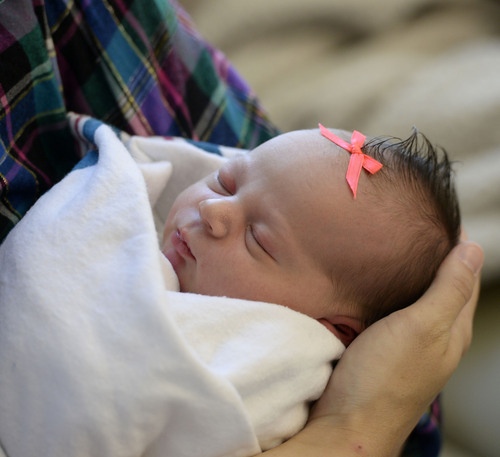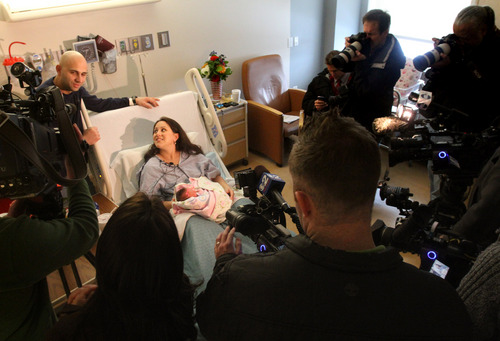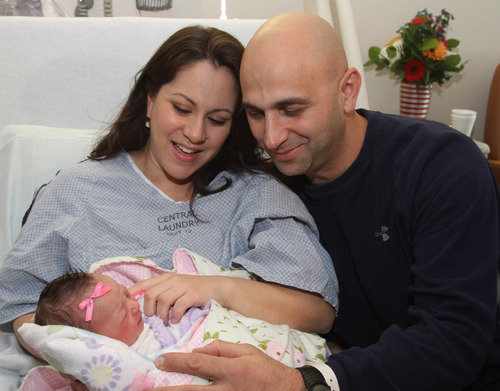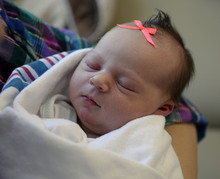This is an archived article that was published on sltrib.com in 2014, and information in the article may be outdated. It is provided only for personal research purposes and may not be reprinted.
The financial crisis of 2008 wiped out savings, jobs and Utahns' desire to procreate, which — unlike the stock market — has yet to rebound.
Utah women delivered 50,937 babies in 2013, down slightly from 2012, when the state logged 51,439 births, according to preliminary data from the Centers for Disease Control and Prevention (CDC).
It's a small difference, but it suggests Utah's five-year baby bust is lingering. The state's birthrate has declined or stalled since 2008; the CDC tallied 55,634 Utah births that year.
Plunging birthrates are a national phenomenon that experts have blamed on a flagging economy causing couples to worry about having enough money to start or grow families.
Nationally, there was a tiny bump of 4,700 births in 2013 — another sign of economic recovery, reports the CDC.
So, how long can Utah, which has long had the nation's highest birthrate, hold out against the aphrodisiac of prosperity?
More recent data from Utah hospitals are inconclusive. Nearly halfway into 2014, the state's busiest hospital labor wards appear to be on track to meet, but not exceed, their number of deliveries in 2013.
"We're still on the decline, but I think that what we're starting to see is some leveling off of that decline," said Laurie Baksh, an epidemiologist at the Utah Department of Health.
As of April 30, the MountainStar health chain, which includes St. Mark's Hospital in Salt Lake City, had delivered 2,836 babies, up 5.3 percent over the same time frame in 2013.
But that includes 171 deliveries at Lone Peak Hospital in Draper, which wasn't open for the earlier part of 2013, said spokeswoman Audrey Glasby. "When comparing the same hospitals in our system in 2013 and 2014, we're actually down by 25 deliveries (less than 1 percent) from last year."
Utah's busiest maternity ward, at Intermountain Medical Center in Murray, has logged 2,026 births to date.
If another 350 babies are delivered at the hospital by month's end, "we would be on track to meet" last year's total of 4,749, said spokesman Jason Carlton.
In raw numbers, California wins for "most babies delivered," with more than half a million newborns in 2013, the CDC report shows.
But Utah, despite its shrinking performance, led the nation with the highest crude birthrate — which is based on the population of women — at 17.6 births per 1,000 residents. That's several percentage points ahead of the next highest states: Alaska, North Dakota, South Dakota and Texas.
The general fertility rate is a more precise gauge, because it's based on women of childbearing age, instead of all females. The CDC has not yet released Utah's general fertility rate for 2103.
Nationally, the number of births rose slightly but the country's general fertility rate — already at a 10-year low in 2012 — dipped again in 2013, to 62.9 births per 1,000 women between ages 15 and 44, the CDC says.
Utah's 2008 crude birthrate was 20.3. Before that year, Utah births had been rising nonstop since 1993.
Like the rest of the nation, the state is seeing an increase in children born to older women and a marked drop in teen births, said Baksh. —
States with highest 2013 birthrate
Utah, 17.6*
Alaska, 15.5
North Dakota, 14.7
South Dakota, 14.6
Texas 14.6
States with lowest 2013 birthrate
New Hampshire, 9.4
Vermont, 9.5
Maine, 9.7
Connecticut, 10
Rhode Island, 10.3
* Rate is per 1,000 women in the population
Source: National Vital Statistics Report, 2013, U.S. Centers for Disease Control and Prevention











